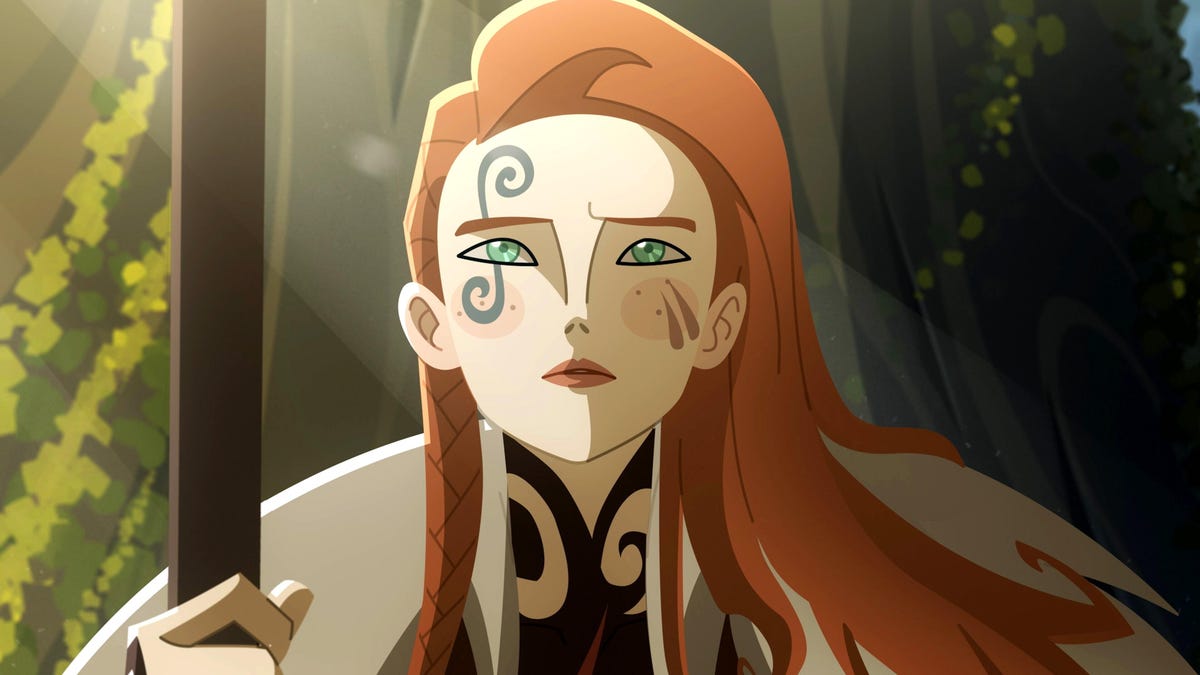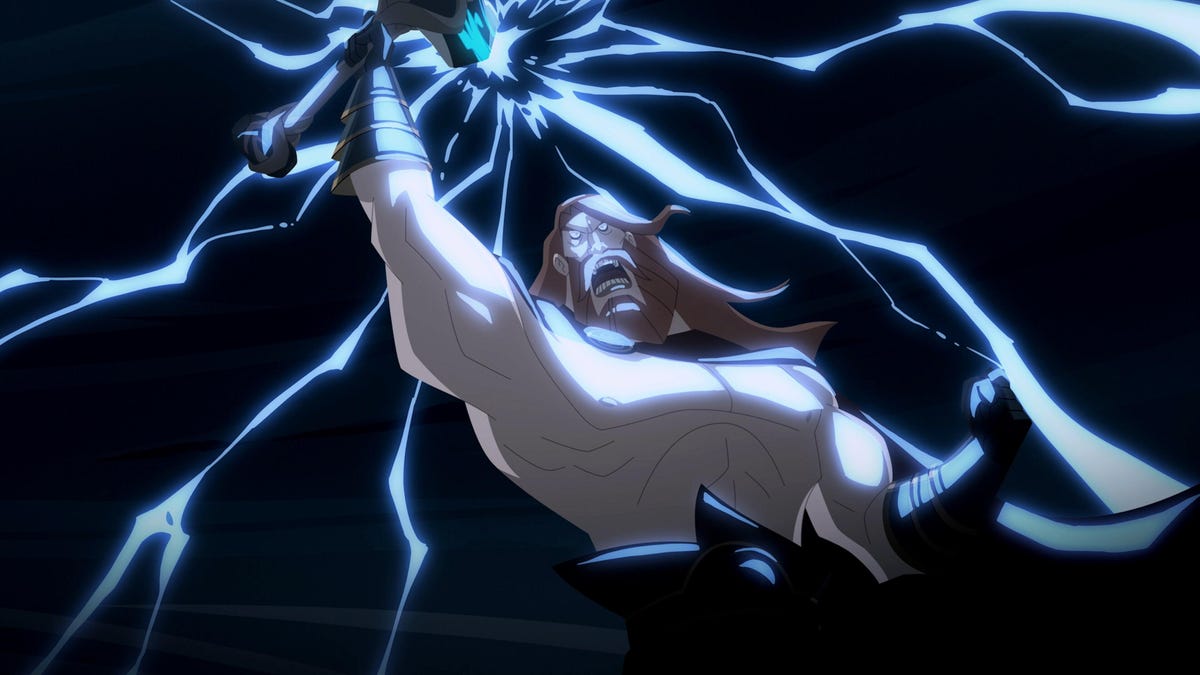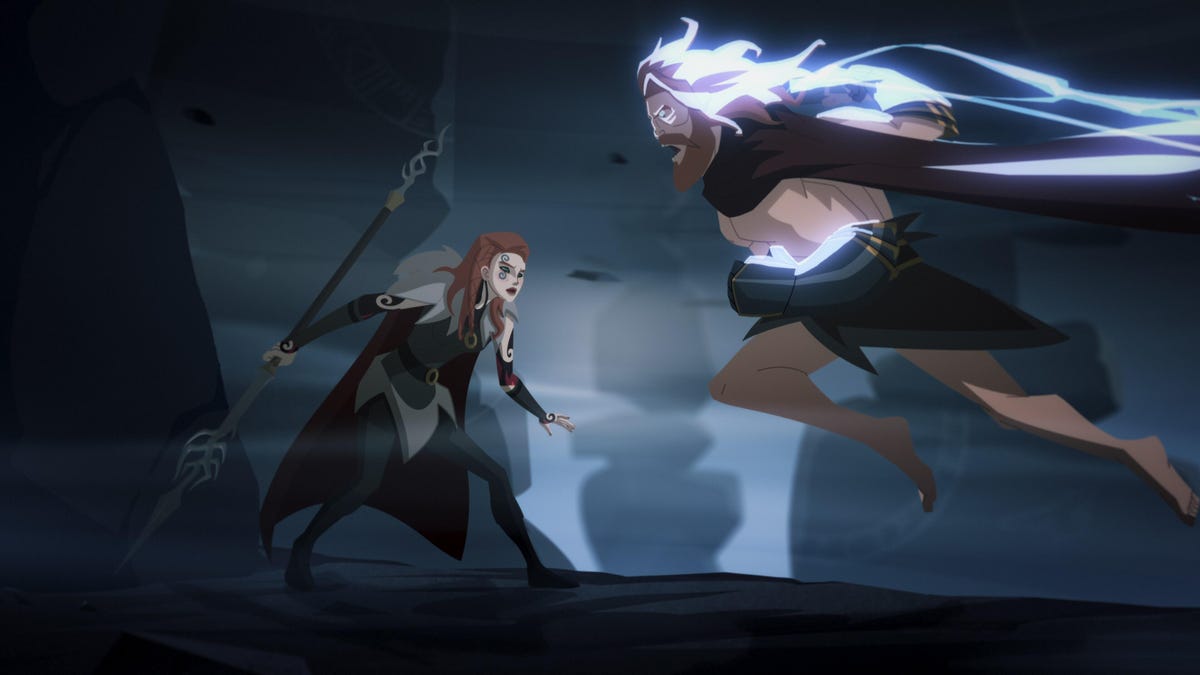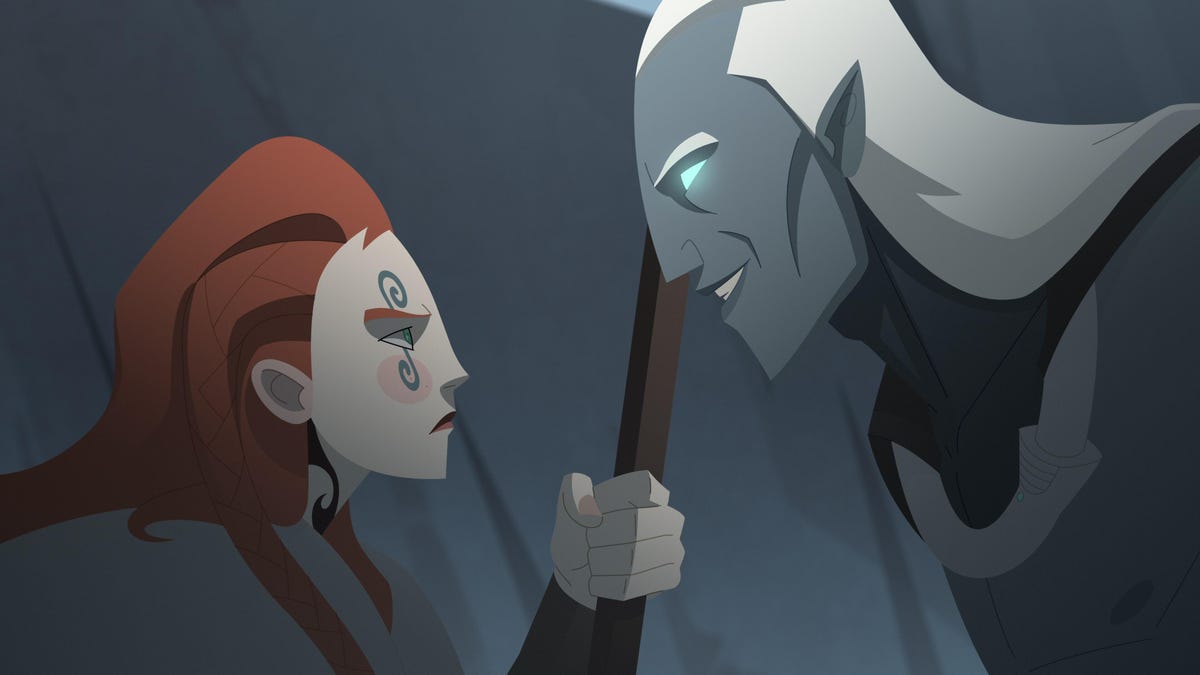‘Twilight of the Gods’ Interview: Zack Snyder on Sigrid, Loki and Crabby Thor




“I fear no gods,” says Sigrid, the protagonist in Twilight of the Gods. But it is clear that after watching the series we should be a little afraid.
When the gods do something wrong, Twilight of the Gods isn’t afraid to call them out. It’s a conscious move after years of studying Norse mythology, and 2D animation was the right medium to tell this adult story. The animated series, which debuts on Netflix on September 19 with a TV-MA rating, features blood, sex, and emotional outbursts.
Created by Zack Snyder, Jay Oliva, and Eric Carrasco, the series introduces Leif, a human king who finds love with the warrior Sigrid after she saves his life. An explosive visit from Thor turns their marriage into something deadly, leaving the half-giant bride bent on revenge. The two assemble a crew with varying abilities and take on the gods.
Sigrid is voiced by Sylvia Hoeks, with Stuart Martin as Leif. The cast also includes Paterson Joseph as Loki, Pilou Asbæk as Thor, Peter Stormare as Ulfr, Jamie Clayton as Seid-Kona, Rahul Kohli as Egill, Hjort Sørensen as Hervor, Kristofer Hivju as Andvari and John Noble as Odin.
Thor is a brutal menace who finds Mjölnir anything but kind (an unusual performance of MC Hammer’s U Can’t Touch This in the show underscores this). Loki is the ubiquitous trickster, but with emotional layers, and Odin is… Odin.
CNET spoke with Snyder and executive producer Wesley Coller ahead of the series premiere about how the show came to be, its characters, and how deep the ancient mythology goes. Below is an edited transcript of our conversation — be aware that spoilers may exist.

Thor and his mighty hammer.
Q: Xilam Animation worked on this project. Based on the trailers, some fans are comparing the 2D style of this show to Samurai Jack or Wolfwalkers. Can you talk a bit about the inspiration behind the animation aesthetic?
Snyder: I think the biggest thing that inspired us was to go for the 2D look as much as possible, and Xilam — Xilam is a great animation studio — but we did all the design in-house. So all the character design and everything was done here, back in Pasadena. By the time we had the look figured out and sent it off to Xilam to animate, we were drinking the Kool-Aid of a full-on 2D freak show. And they really responded to that call in an incredible way. The animators are so good and the subtleties of the execution are so beautiful that I’m really glad we hired them to do the show, because it’s incredible.
I read that you started this during the pandemic. Were there any challenges getting this done?
Snyder: Yeah, there were huge challenges. The pandemic slowed us down a little bit, but I feel like we were constantly moving forward. We kept pushing forward, and it ended up working out really well. I think we did some of the filming during the pandemic, and some of it was in post-production. There were some moments where people had to record from home, and then some of it, on a second session, they got to come into the studio and see them, so that was fun. These actors are all over the world, so it was pretty awesome in that way.
Coller: I think in the beginning it was a little bit of a learning curve on how to navigate that remote world that we were all exploring at the time. But I think the process, in many ways, is maybe best suited to moving to a remote version. So we just had to adapt to that. And I think ultimately it was great to get people back in the studio and do things in person. It was definitely a journey, for sure.

This series really delves deep into Norse mythology — even into the politics between the Aesir and Vanir. How much time did the entire creative team spend researching some of this Norse mythology?
Snyder: It literally took years, in terms of the storyline and the closure of the story. One of our writers, Peter Aperlo, wrote a book on Norse mythology, so there was a deep knowledge of Norse mythology. I had what I thought was a pretty good knowledge of Norse mythology — it turns out that when you’re around these scholars, you’re like, “Oh, gosh.” Because I’m a constant learner, that was fun, and it was fun learning with everybody.
But I think we had our human story, and that allowed us to put some pretty heavy mythology on Sigrid’s story. We can, from a basic story standpoint, say, “Something terrible happens to our main character. She wants revenge, so she assembles a team of warriors to get that revenge.” From a basic story mechanics standpoint, it’s pretty simple. But the Norse aspects of it are so strange and intricate and bizarre that they make the show really fun and crazy. And I love all of those things.
This version of a certain thunder god, Thor, is really one that we haven’t seen very often. The mythical Thor has a temper, but he loves people. The Thor of this show is a little different. How did you come up with this version of him?
Snyder: The Norse myth is very adult-oriented, and Thor is a known giant killer. He loves killing giants; in the mythology, he kills giants all the time. We knew he had father issues, and he’s very powerful. The combination of those things could lead to something. Because the thing about Thor is ego. It would obviously be a problem if you were a god, a thunder god and a warrior god, especially — you could really get too deep into yourself. That’s kind of what we got with our Thor.
Let’s talk about Sigrid. She’s the central character, and despite her relationship with the love of her life here, she’s pretty much a single focus for most of this series. She’s one of the warrior women that we meet. Can you talk about how you built her from scratch?
Snyder: I love the relationship between Sigrid and Leif, and how devoted he is to her and how crazy he loves her, and how crazy she is about him. But family is so important and family defines us. And I think in her case, she’s overcompensated for this revenge trip that she’s on. She’s kind of lost a part of herself, and sometimes the things that you take for granted and that are right in front of you are the “why” of everything. And that’s kind of what happens to our Sigrid in this quest. I think her discovery is that she sacrifices the thing that she loves for this kind of crazy revenge trip that she’s on. Ultimately, she learns a little bit — spoiler alert — a little bit too late, probably, but we’ll see.

Coller: Just like any character that you want to connect with — I think for me it’s the fact that I think we’ve all been through something like that, where we’ve encountered something that at that moment became a driving force that wanted to get a reaction out of us. Or, wanted to get a reaction out of us, rather than a more conscious action; something that’s less reactive. If you can relate to a character like that — we’ve all been there — but then also see the price that she pays to get revenge, I think she’s a very relatable character that we can all see a little bit of ourselves in. But also, as an audience, it keeps you on your heels and waiting to see if she’s going to back down at some point or if she’s going to fully realize this.
This image of Loki was really unique. What was the idea behind it?
Snyder: Loki is clearly the trickster, the one pulling the strings behind the scenes. We also wanted to reveal the subtleties and nuances that drive the decisions he makes, like what happens to his children and how he blames Thor. You get a little bit of a sense of why they’re fighting and why there’s a rivalry. It’s not black and white, of course. Neither one of them is without guilt.
Twilight of the Gods is another term for Ragnarök. What can you tell us — in a spoiler-free way — about the overall meaning of that for everyone in this series?
We wanted to do a show that was going to lead up to Ragnarök; we were going to get there eventually. But we didn’t want to go straight to Ragnarök, because we liked being in the mundane world of normal Norse mythology without the Ragnarök endgame hanging over us. We knew we had our eye on it, and so you had this Ragnarök reference within the concept of Twilight of the Gods.




